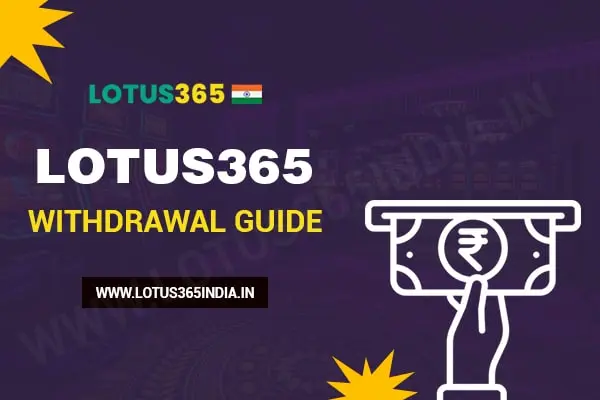Lotus365 Withdrawal Methods

How to Withdraw Money from Lotus365
Withdrawing funds from Lotus365 should be simple, secure, and fast. SSL encryption is used throughout the site; therefore, every transaction takes place in a safe environment and has an easy-to-use interface. Follow these steps:
- Choose the Option: Select “Withdrawal” under “Account” button at the top of this page where different transactional means such as bank transfers along with UPI will be offered. Choose the most convenient for you.
- Insert the Amount: Enter the amount that you want to withdraw, consider your recent winnings and make sure the figure meets Lotus365 minimum withdrawal limit of ₹300.
- Confirm the Details: After entering the amount, go over all details again. Ensure accuracy of your personal information and banking details to avoid any complications later on.
- Wait for Approval: Once you confirm those details, please wait as your request is being processed for approval. This might take a while but UPI transfers usually take just a few moments.
Withdrawal Rules
To ease this process, it is important to understand some of Lotus365’s payout rules. Here are some guidelines:
- Minimum Withdrawal Limit: You have to meet ₹300 minimum withdrawal limit in order to start cashing out.
- Consistent Payment Details: Your payment details must match exactly with your name at lotus365.com; transactions with intermediaries are not allowed due to risks associated with frauds..
- Identity Verification: All identity verification processes should be fully completed before requesting any payouts
- Approval Time: In case there are additional checks required by Lotus365, it may need up to 3 days before approving requests.
- Bank Charges: There might be certain bank charges depending upon bank transfers’ payouts method chosen.
- Wagering Requirements: If you win using bonus credits, then you must wager certain amounts as stipulated before withdrawing these funds.
Lotus365 Withdrawal Time
The duration taken to process your withdrawal request depends on the method used and how long it takes for approval.
- UPI: It takes around 5-10 minutes thus being one of the swiftest options.
- Bank Transfers: May require up to 3 business days owing to banking protocols and more identity proofs.
Possible Issues with Money Withdrawals
Rarely, there may arise difficulties when withdrawing money from Lotus365. Understanding these issues and their solutions can make your life a lot easier.
| Issue | Solution |
| Minimum Withdrawal Requirement Not Met | Make sure the amount is ₹300 or above, as this is the minimum limit Lotus365 withdrawal for cashout. |
| Mismatch in Personal Details | Keep your account information up-to-date and accurate; mismatching information can halt transactions. |
| Unfulfilled Wagering Requirements | Follow the betting conditions provided by Lotus365, especially when using bonus credits. |
| Incomplete Identity Verification | Complete full ID verification before making any withdrawal requests to avoid hold-ups during approvals. |
FAQs
Choose from several withdrawal options such as bank transfers or UPI (Unified Payments Interface) on Lotus365. All of them are flexible and you choose the one that suits your needs best.
